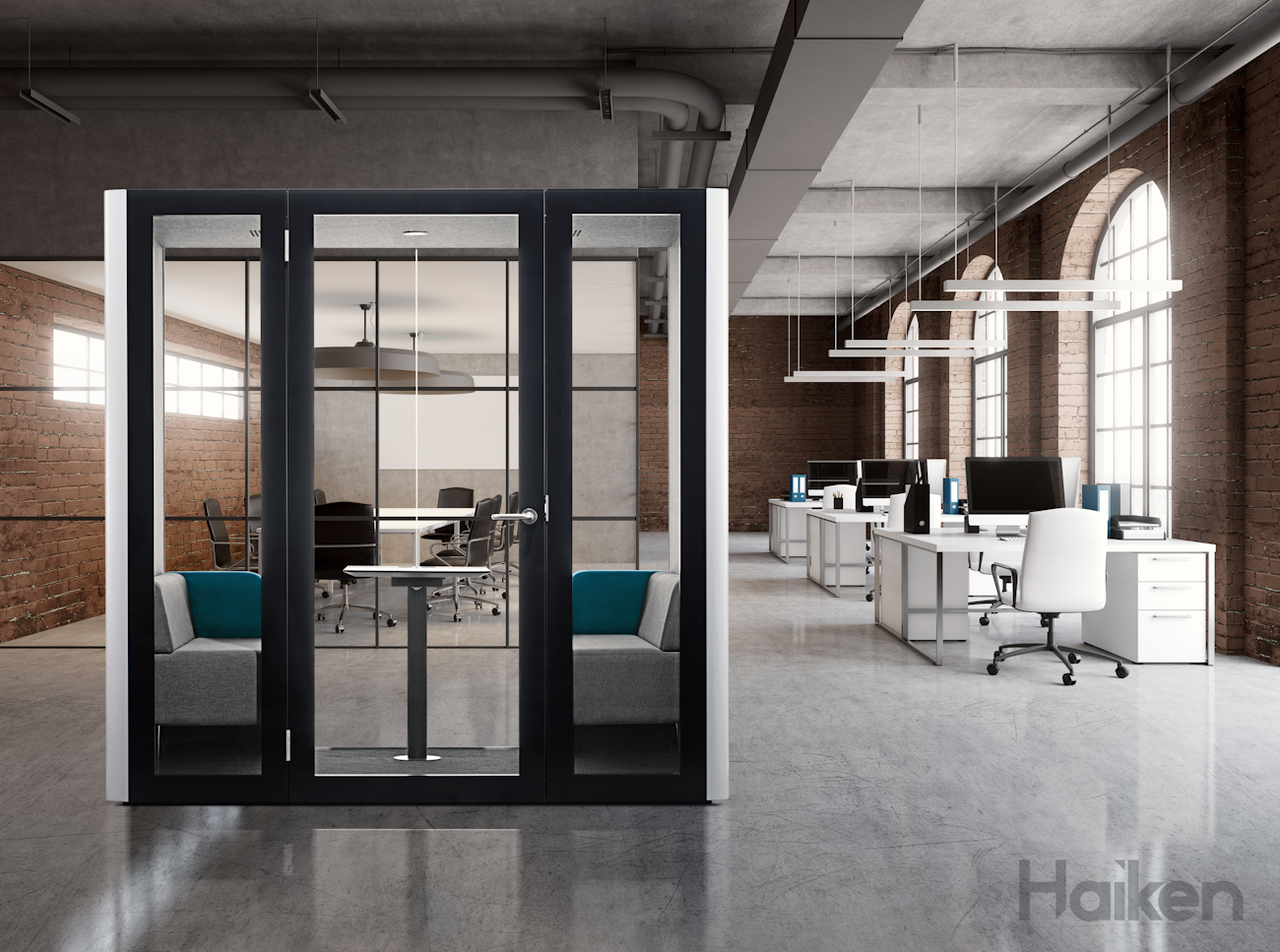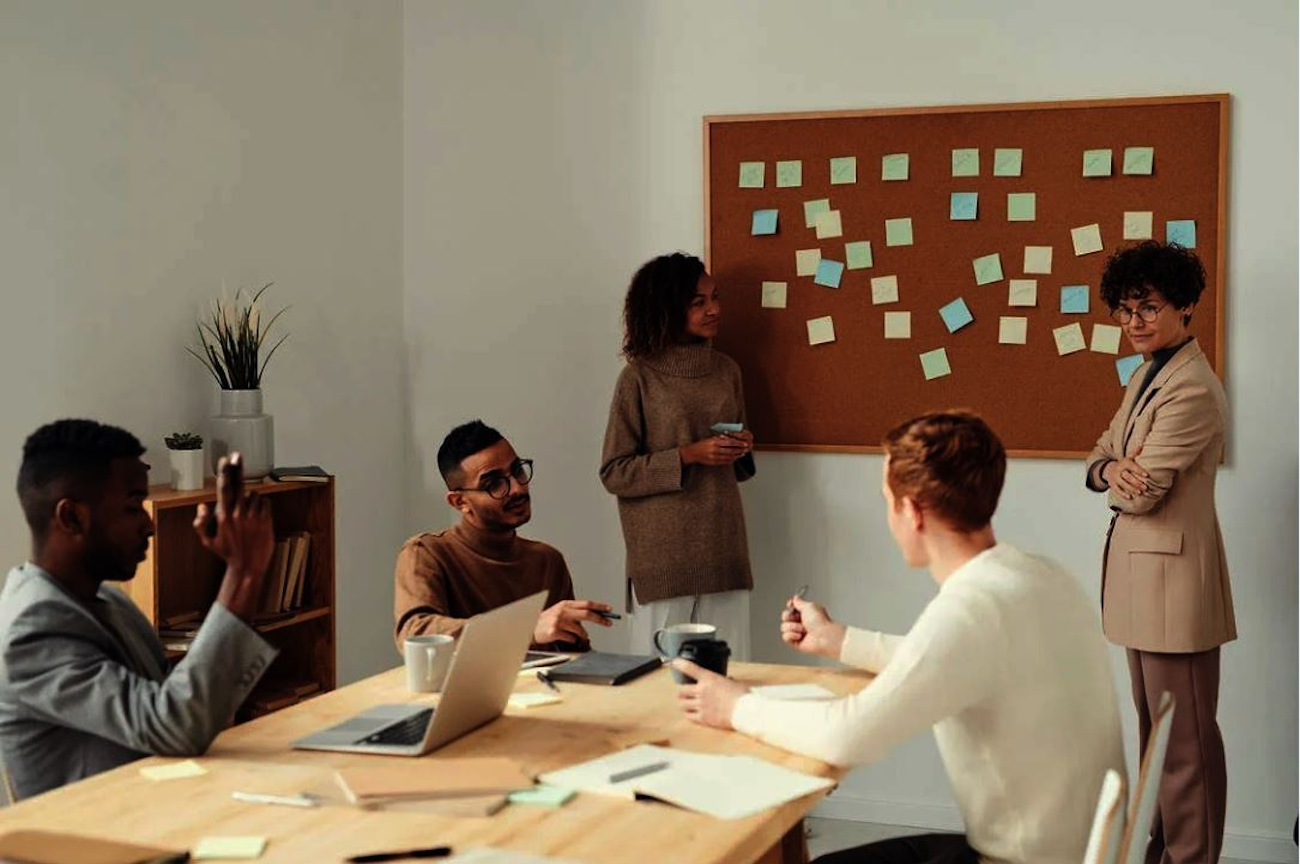Insights
5 Essential elements to creating a hybrid workplace

Workplace design is continuously changing just as the world is around us. The office has so far evolved from flexible to agile working and finally hybrid working, a trend which COVID-19 greatly accelerated into become the accepted way to work. Employees are looking more and more towards workplaces where they can choose how and where they work, whether it be collaboratively or independently. With offices having to adapt to the changing needs of employees, we’ll cover the 5 essential elements of a hybrid workplace in this article:
- Space for every style of working
- Encouraging relationship building
- Incorporating technology
- Flexible and adaptable areas
- Creating a purposeful and comfortable setting
1. Space for every style of working
It Is now essential to have areas for every style of working from collaborative to independent, even with the increasingly common open plan office. Hybrid workers today make use of a variety of spaces from focused work at their desk to small meetings in a pod all the way through collaborative work at a co-work desk. . Creating these dedicated areas where employees instinctively understand the usage, is the task that office designers are faced with today.
To create these zones for a hybrid workplace, there is a variety of choices at our fingertips. Anything from acoustic screens to the clever design and use of furniture such as:
- Wright Co-Work Desk: A large high table that can, not only be used for meetings as well as individual work, but also as a statement piece with the ability to personalise by adding flora to the frame.
- Soundroom: These spaces allow for individual work or for a team gathering, while the acoustic back and sides limits sound travel creating a sense of privacy.
- Height-adjustable desks: The ability to do focused work while choosing your working height, eliminates that bad back. Using the desk in a standing position also allows to collaborate with a small group easier.

2. Encouraging relationship building
This requirement for adaptable space is driven by a need for more interaction, known as ‘the human moment’, in the workplace. As the links colleagues had, have in most cases drastically deteriorated over lockdown due to a lack of face-to-face time.
Building relationships with colleagues, is becoming increasingly more important, especially as more and more people work from home. Harvard Business Review ‘studies in cognitive psychology and neuroscience’ show that human cognition depends not solely on how the brain processes signals, but also on the environment in which those signals are received. Which is why the limited body language available in video conferences can trigger misinterpretation and make bonding difficult. Being physically together helps people interpret others’ moods and personalities, making it easier to build and cement relationships.
To encourage more communication and ‘human moments’ increased flexibility and movement is being introduced to the workplace. This flexibility can be created in various ways; whether it be using a large multi-purpose collaborative desk that can be used for working individually or together, or light flexible dividers that can be reconfigured any time anywhere.

3. Incorporating technology
The workforce is increasingly dependent on technology – the most obvious example being video conferencing platforms. This shift calls for, excuse the pun, private spaces where video calls can take place uninterrupted.
Meeting pods are becoming increasingly more popular in hybrid workplaces, allowing people to enter a ventilated private space with good lighting to ensure an optimal set up to ace that video call.
Another way of incorporating technology is by adding smart storage. In loosing designated desks, employees lose their own personal space. It is essential for employees to have a space or their own or a ‘base’ where they start every day as it creates a feeling of belonging rather than just feeling like another pawn in the business. One way of solving this is to provide storage space such as smart lockers which are personal and also feel private giving a sense of security. Additionally, employees manage their own lockers via an app which creates a lower burden for management.

4. Flexible and adaptable areas
Along with a drive for hybrid workplaces to cater for all styles of working, there is also a need for the areas to be interchangeable. A hybrid workspace allows for areas to adapt to various ways of working whether it be big meetings, small team collaborations or autonomous work.
Arc screens are not only the perfect zone for either individual working or a one-on-one meeting while helping to divide up a large area but they also have a sound absorbing roof to ensure some privacy.
Uncertainty is the only certainty, as John Allen Paulos said, so to make a hybrid workplace future-proof is by making it flexible and adaptable. An example of this is by incorporating telescopic desk frames in any new office design as this allows to create more or less desk space by simply changing the tops.

5. Creating a purposeful and comfortable setting
A McKinsey survey shows that 49% of employees were feeling somewhat burned out and the effect is a desire for a better work-life balance. While offices can’t compete with people’s homes, the office can have its own purpose in this new landscape and focus on collaborating and building connections. The office can be used in the sense of a ‘campfire’ setting, where people meet up, share stories and re-connect with the company.
As employees start to have the choice whether to work from home or in the office, it is important to create an inviting and comfortable atmosphere in the workspace. Hence the increased incorporation of soft furniture is becoming more mandatory than unique.
With a majority of offices being open plan, another problem arises: sound. According to the Harvard business review survey interruptions due to sound affect the productivity of a third of workers. This is where the stylish fix of acoustic panels and screens come into play. These panels can be used as a form of art that not only add character to the workplace but also help to prevent sound travel. Not sure whether you have a sound problem? Haiken provides free calculations on how much sound absorption your office needs to create a productive environment.
Redesign your workplace to accommodate hybrid working with Haiken today
With our wide range of furniture for every style of working, we have every resource to transform your workplace into a buzzing hub. Contact us today to choose the perfect furniture to elevate your workspace.